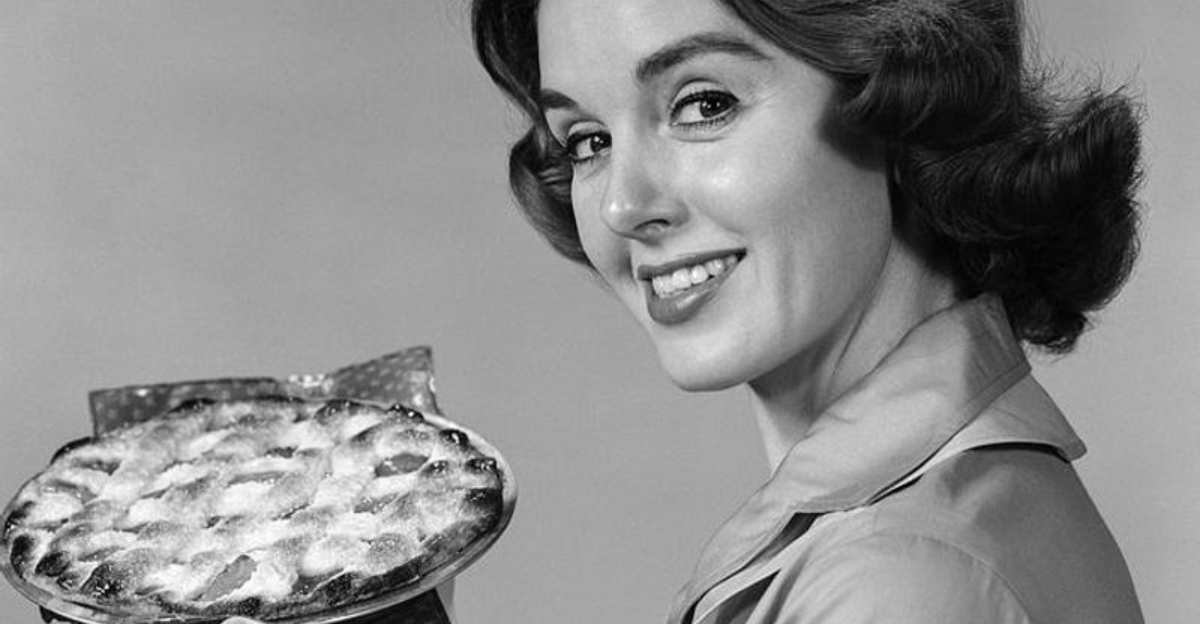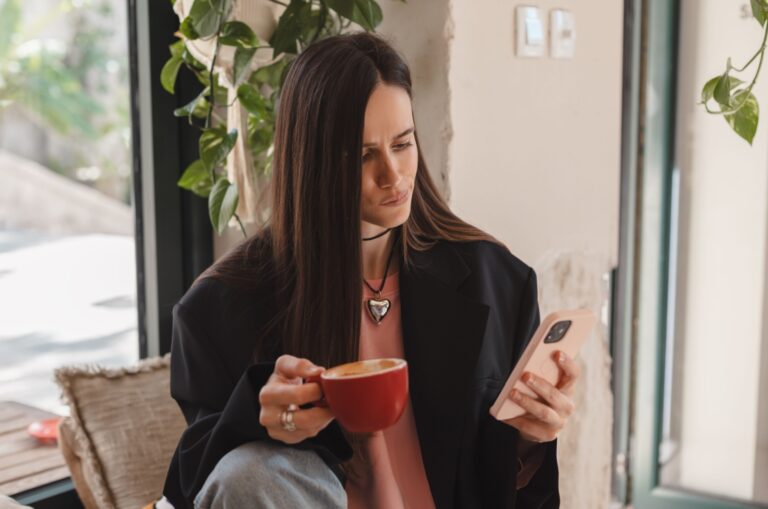15 Unexpected Ways Women Had Fun in the 1950s—Plus 3 Secrets Modern Women Should Steal
Explore how women in the 1950s embraced unique and joyful activities to find happiness. Despite societal expectations and limitations, these women carved out moments of joy, community, and self-expression.
Here are 15 unexpected ways they did so, plus 3 timeless secrets modern women can still embrace.
1. Potluck nights with handwritten recipes
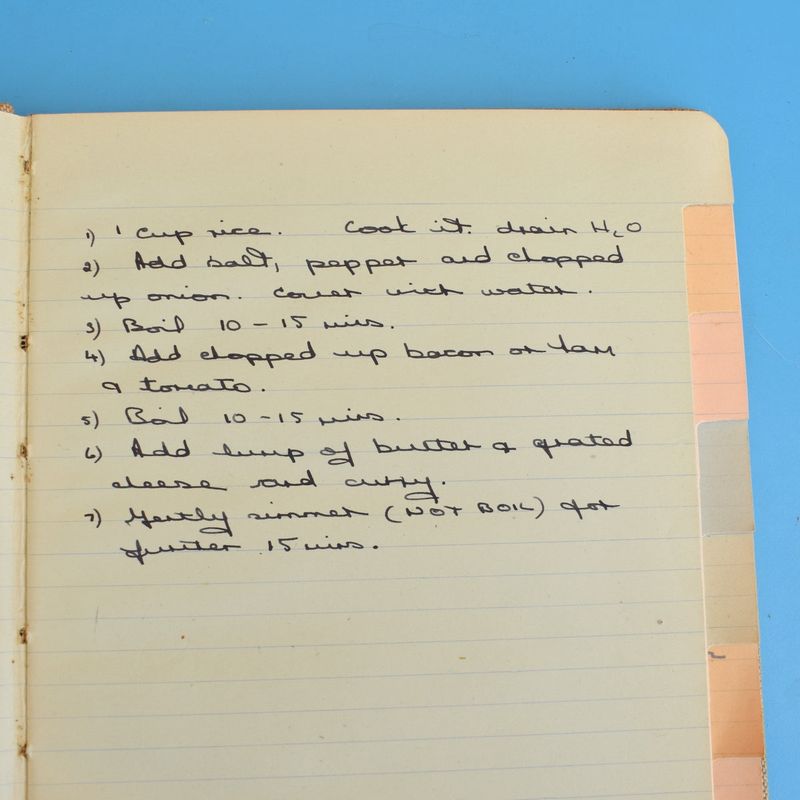
Potluck nights in the 1950s were more than just opportunities to share meals; they were a cultural phenomenon. Women would gather, bringing their cherished recipes handwritten on index cards. These gatherings were not just about food, but about community, laughter, and sharing stories.
Each dish carried a personal touch, a secret ingredient, or a cherished family tradition. The joy of these evenings lay in the variety of flavors and the warmth of companionship. Women bonded over culinary successes and mishaps alike, finding a common ground in the joy of cooking.
These potluck nights were a testament to creativity, with every woman contributing a piece of her soul in the form of a casserole or pie.
2. Neighborhood talent shows in church basements
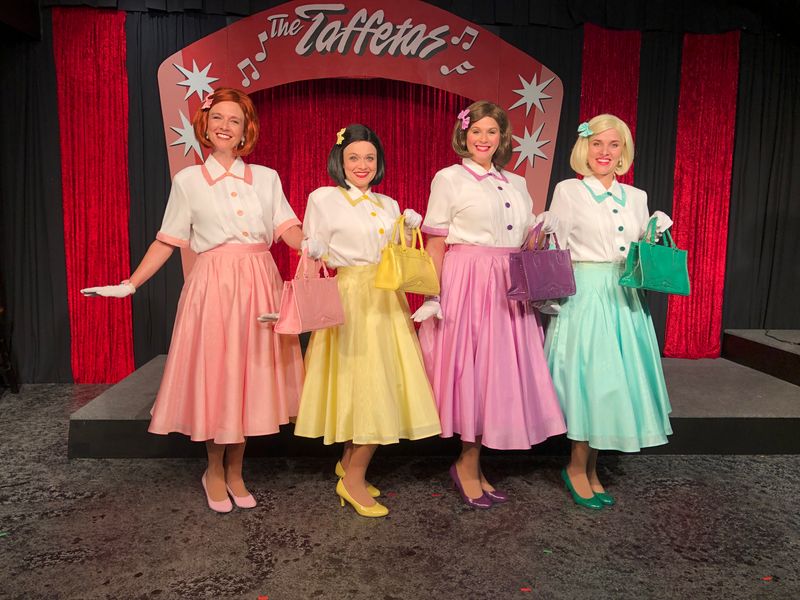
In the 1950s, church basements often transformed into stages where local talent could shine. Women organized neighborhood talent shows, showcasing their singing, dancing, or comedic skills. These events were a delightful mix of nerves and excitement.
Participants and spectators alike cherished these gatherings as chances to break from routine and revel in light-hearted entertainment. The shows were informal, yet packed with creativity, bringing communities together in support of homegrown stars.
Laughter and applause filled the air, creating memories that lasted long after the performances ended. The camaraderie and encouragement witnessed here were as rewarding as the acts themselves, making these events a highlight of the week.
3. Book clubs that doubled as vent sessions

Book clubs in the 1950s offered more than just literary discussion; they were sanctuaries for women to express themselves. As they met regularly, these groups evolved into trusted circles where members could openly share their joys and frustrations.
While books served as the initial focal point, conversations often expanded into personal stories, dreams, and societal issues. The warmth of these gatherings lay in the balance of intellectual engagement and emotional support.
Members left feeling uplifted and understood, carrying newfound insights into their daily lives. The bond created over shared narratives and mutual understanding made these meetings invaluable to women seeking connection.
4. Weekly bowling nights
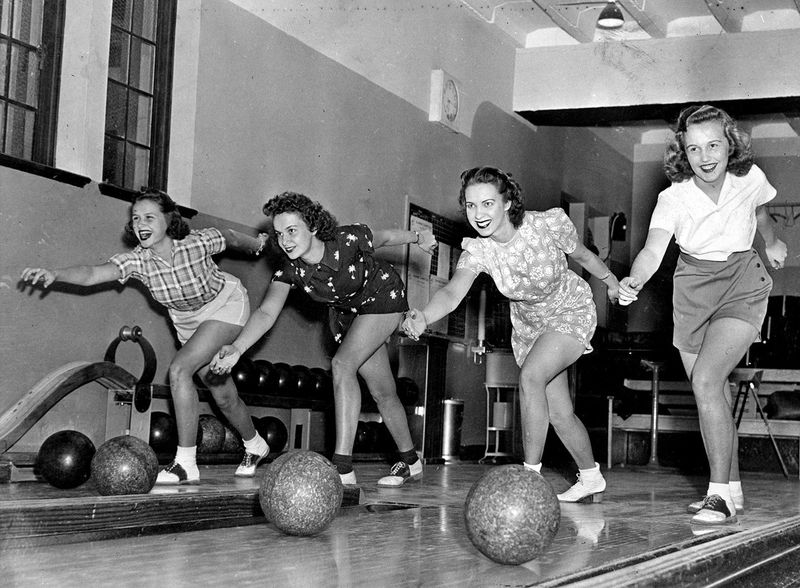
The allure of weekly bowling nights in the 1950s was irresistible. With the clatter of pins and the laughter of friends, women found a joyful escape from daily routines. Bowling alleys turned into social hubs where competitiveness and camaraderie thrived.
These nights were about more than just the game; they were about building friendships and communities. Women donned their best bowling outfits, bringing flair and style to the lanes. The sport offered a perfect blend of challenge and leisure.
As balls rolled and pins fell, so did barriers, allowing women to connect over shared victories and humorous mishaps. Bowling nights were a cherished tradition, providing entertainment and much-needed relaxation.
5. Secret recipe swaps between friends
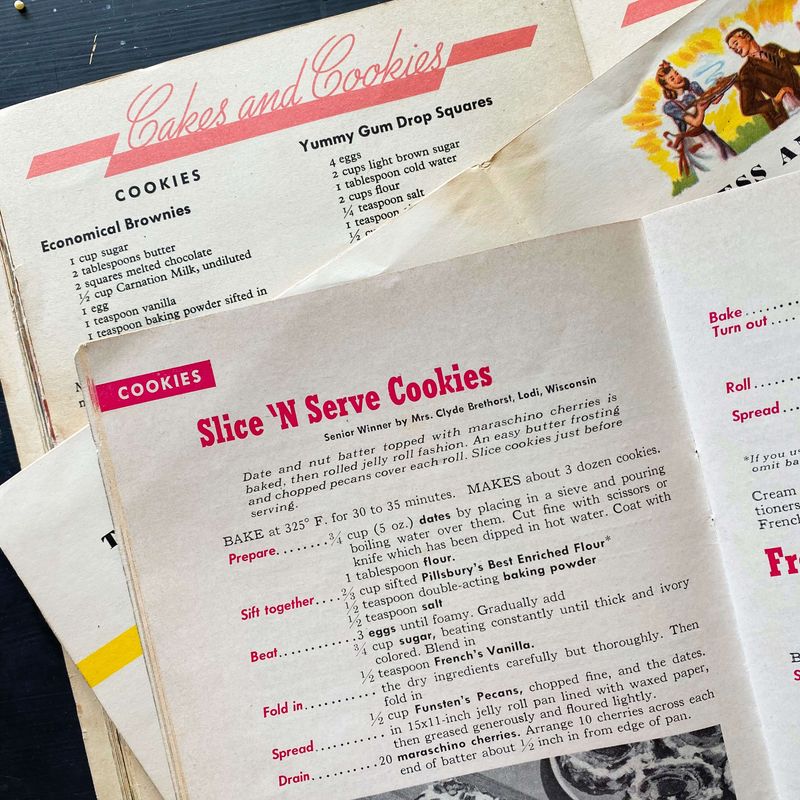
In a time before the internet, recipe swaps were a beloved tradition among friends in the 1950s. Women would exchange their most treasured culinary secrets, often scribbled on well-worn cards, over a cup of coffee.
These swaps were more than just about food; they were about preserving family traditions and sharing a piece of one’s culture. Each recipe carried a story, a memory, or a particular flair that made it unique.
Friendships flourished over these exchanges, with each new recipe like a gift of trust and affection. The joy lay in trying out new dishes and celebrating each other’s culinary innovations, strengthening bonds with every shared bite.
6. Sewing circles that were more fun than they sound
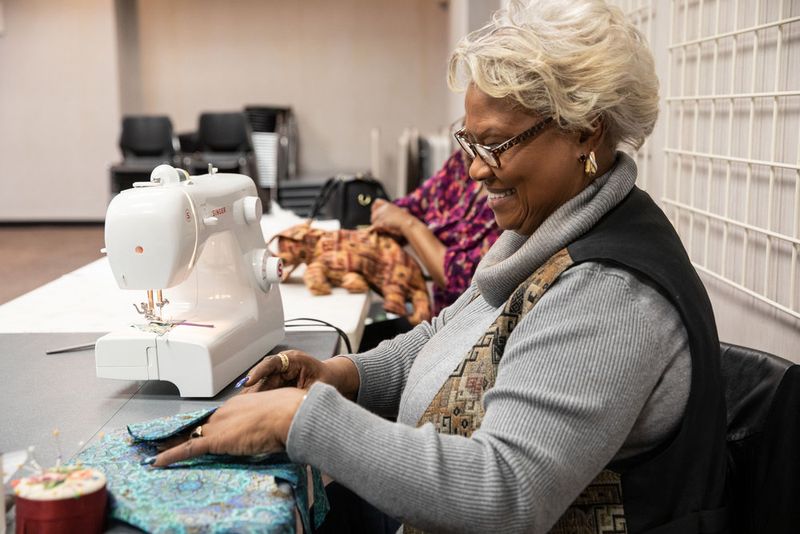
Sewing circles in the 1950s were lively gatherings where women shared more than just needlework. These circles provided a space for creativity, companionship, and skill-sharing. As they stitched, women also wove stories, advice, and laughter into the fabric of their meetings.
The rhythmic sound of needles was accompanied by spirited conversations, with each member contributing to the tapestry of the group. It was a place where new skills were learned, and friendships flourished.
More than just a hobby, sewing circles were a cultural cornerstone, offering both a productive outlet and a communal experience. They were a reminder of the beauty in crafting something with one’s own hands and heart.
7. Writing fan letters to movie stars
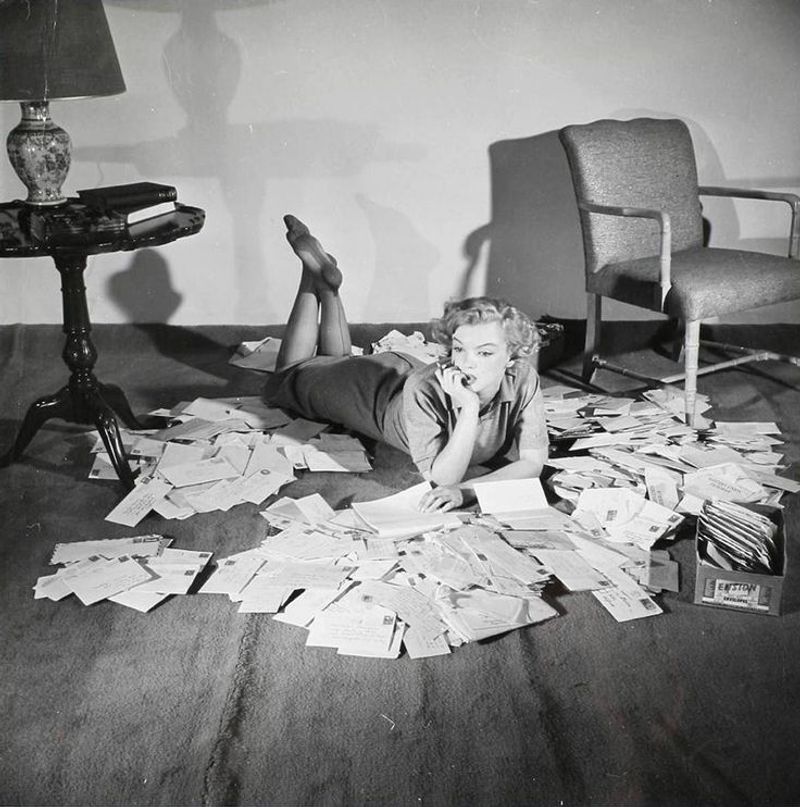
In the glamorous 1950s, many young women found joy in writing fan letters to their favorite movie stars. This pastime connected them to Hollywood’s golden era, allowing them to express admiration and feel a part of the larger entertainment world.
These letters were heartfelt, filled with dreams of stardom and appreciation for the silver screen’s icons. Each envelope sent was a bridge to a world of glamour and fantasy.
The thrill of receiving a reply, though rare, was an unforgettable joy. This simple act of letter writing provided a creative outlet and a sense of companionship with fellow fans, uniting them under shared admiration and dreams.
8. Collecting records and learning lyrics by heart
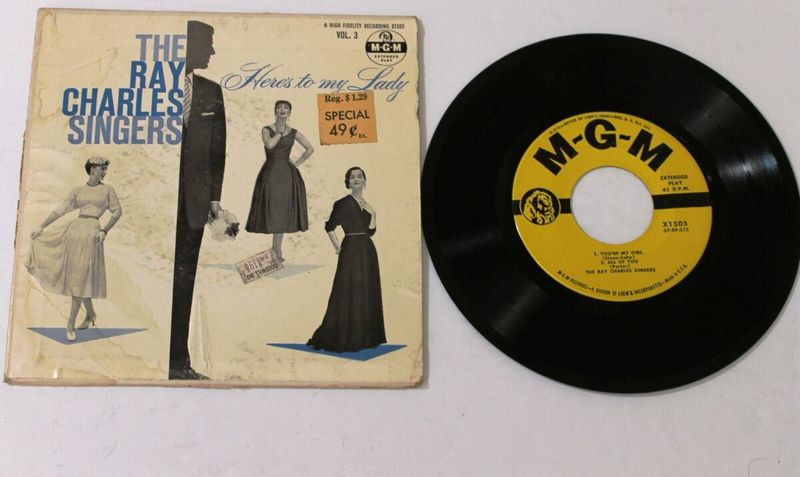
Music was a powerful force in the 1950s, and collecting records became a beloved hobby for many women. They cherished their vinyl collections, gathering the latest hits and timeless classics.
Listening sessions were sacred moments, with lyrics memorized and melodies hummed long after the turntable stopped spinning. These sessions offered both solace and joy, a soundtrack to daily life.
Women often gathered to share music, swapping records and singing along, creating musical bonds that transcended words. The power of music to unite and uplift was never more evident than in these shared experiences, turning every gathering into a spontaneous concert.
9. Hosting makeup or fashion parties
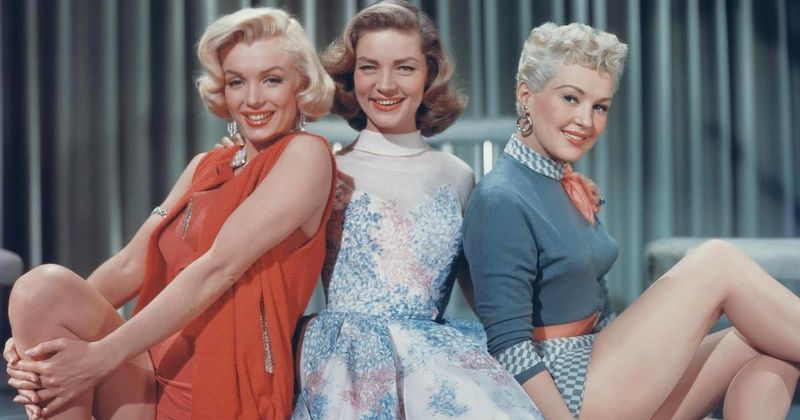
In the 1950s, makeup and fashion parties were trendy events where women explored the latest beauty trends and shared style tips. These gatherings were vibrant and full of life, offering a chance to experiment with new looks.
Women relished the opportunity to try out different shades of lipstick or discuss the newest fashion styles. It was a space for creativity and self-expression, where individuality was celebrated.
Such parties were not just about aesthetics but about bonding and empowering each other through shared advice and encouragement. They were moments of liberation, where women could redefine beauty standards and support each other’s personal style journeys.
10. Roller skating after dinner
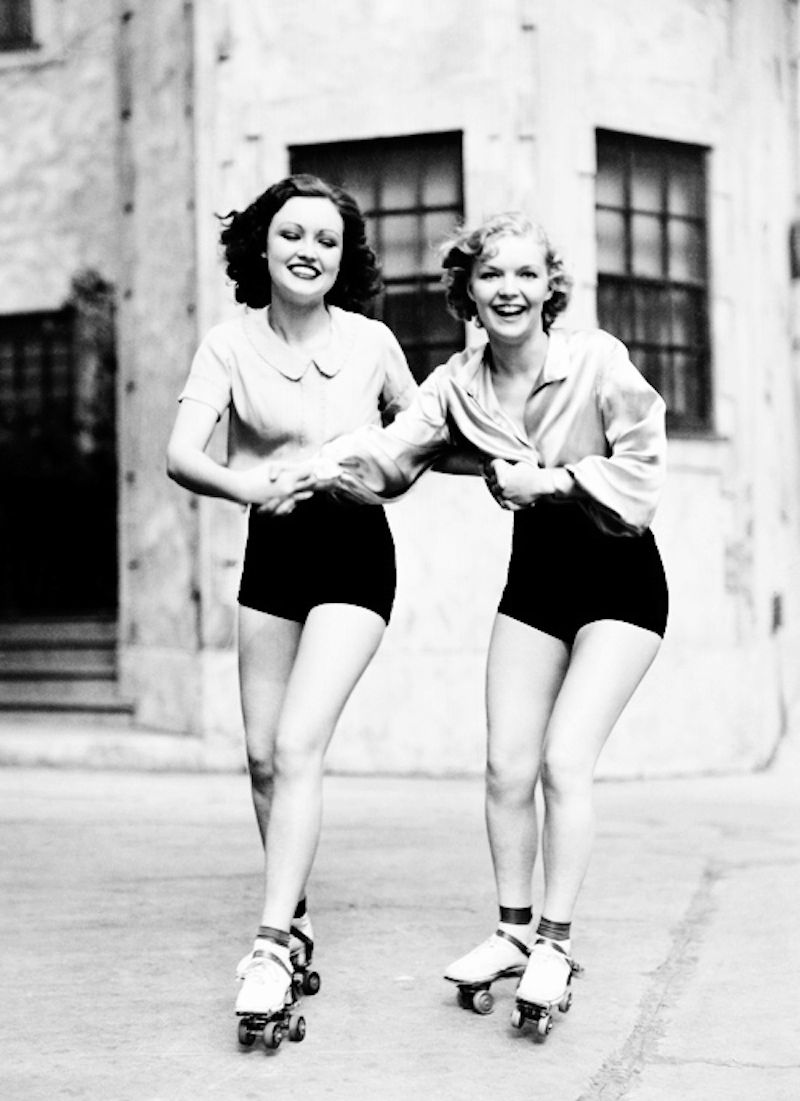
Roller skating after dinner was a cherished pastime in the 1950s, bringing families and neighbors together for an evening of fun and exercise. The streets became lively with the rhythmic sounds of skates gliding over pavement.
Women, often accompanied by children, enjoyed the freedom and thrill of skating under the stars. It was a simple joy that offered a sense of community and exhilaration, breaking the monotony of daily routines.
This activity was not only invigorating but also a delightful way to connect with others, sharing laughter and friendly races. Roller skating became a symbol of carefree joy and the delight of shared experiences.
11. Homemade beauty treatments with friends
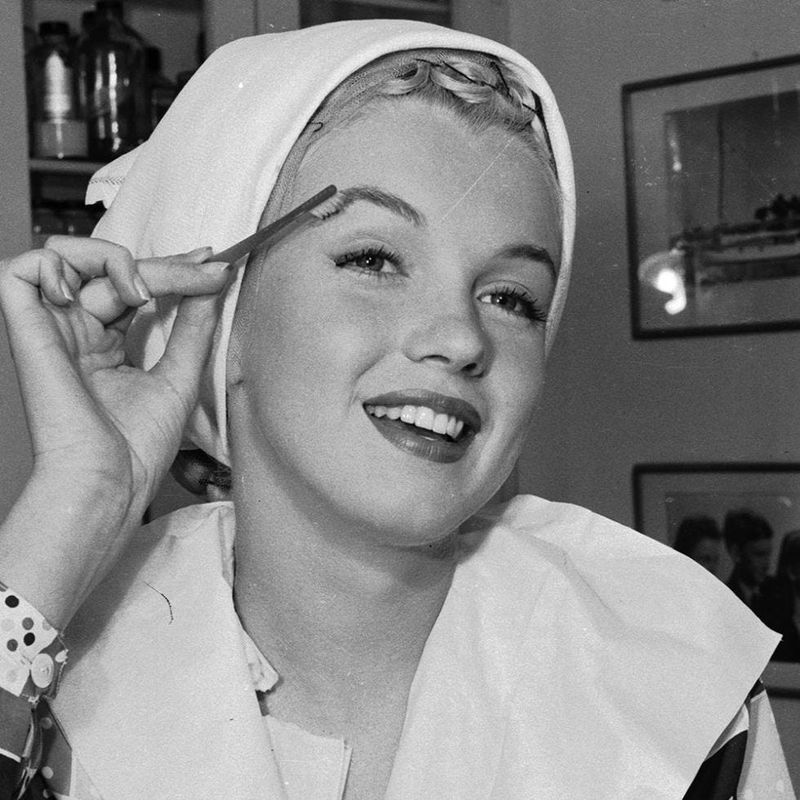
Beauty rituals in the 1950s often involved creating homemade treatments, turning kitchen ingredients into skincare magic. Women gathered to mix, apply, and relax together, finding joy in these natural beauty experiments.
These gatherings were more than just about skincare; they were about friendship and self-care. Women shared tips and recipes, laughing at the messes and celebrating the results together.
The simplicity of these treatments, combined with the companionship, made them cherished rituals. It was a time to unwind and nurture both skin and friendships, proving that beauty, at its core, was about feeling good and having fun with those you love.
12. Gardening as both therapy and pride
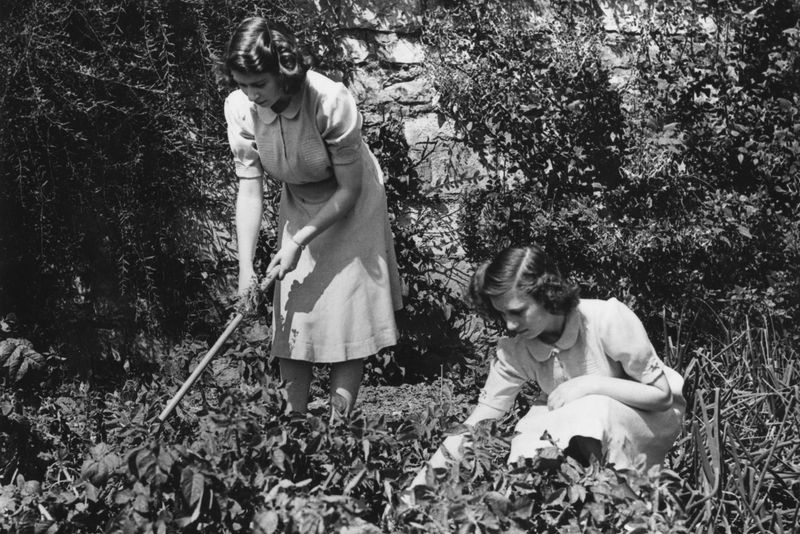
Gardening in the 1950s was a beloved hobby that provided women with a sense of accomplishment and tranquility. Tending to flowers and vegetables offered not only beauty but also therapy for the soul.
The garden became a personal oasis, reflecting one’s care and dedication. Women took pride in their green spaces, sharing plants and tips with neighbors, creating a community of blossoming friendships.
Gardening was a meditative practice, offering peace and satisfaction from nurturing life. It was a reminder of resilience and growth, teaching patience and the joy of seeing one’s efforts bloom into vibrant life.
13. Dressing up for no reason
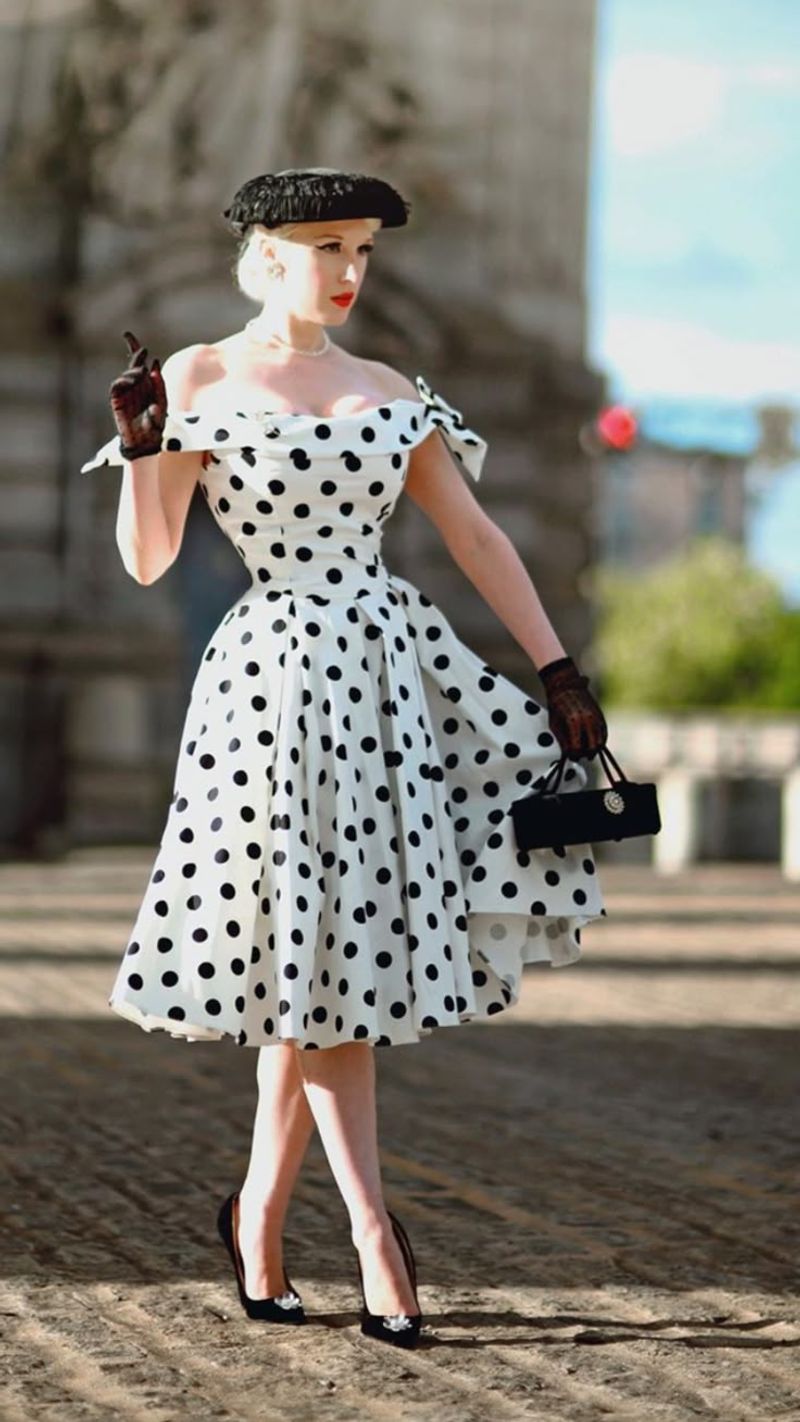
In the 1950s, women often dressed up just for the joy of it, embracing fashion as a form of self-expression. This practice turned ordinary days into occasions, adding a touch of glamour to everyday life.
The act of dressing up was not about impressing others but about celebrating oneself and feeling confident. Women found happiness in their personal style choices, experimenting with trends and silhouettes.
Fashion became an art form, a way to convey mood and personality without words. This ritual fostered a sense of empowerment and joy, proving that a beautiful outfit could transform an ordinary day into something special.
14. Baking contests (real or unofficial)
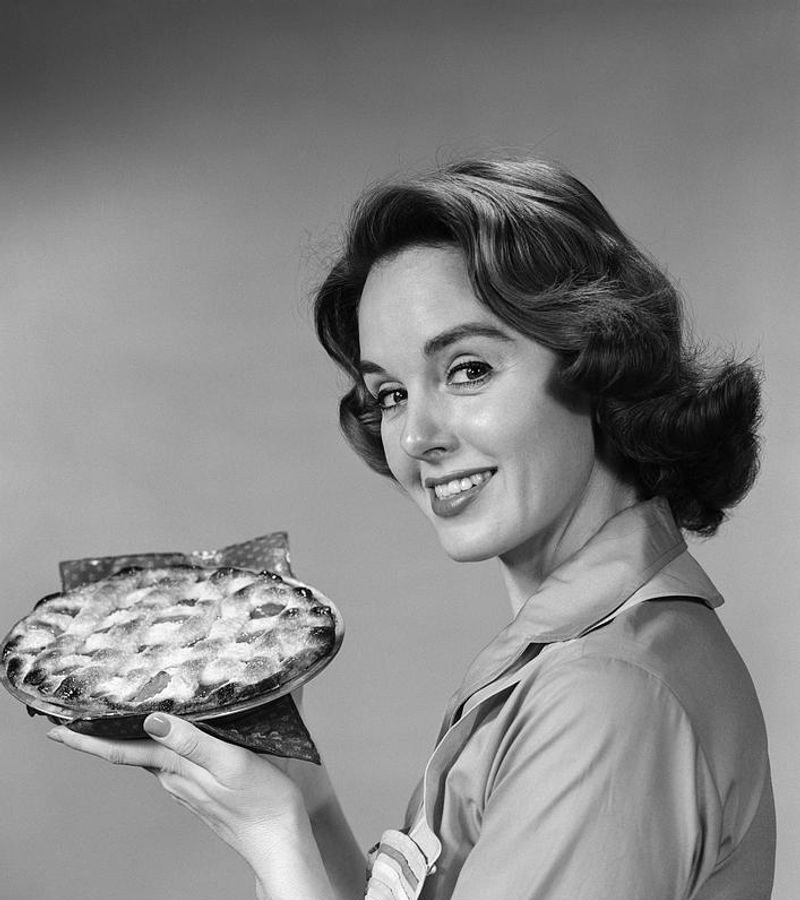
Baking contests, both real and unofficial, were delightful events in the 1950s, where women showcased their culinary skills. These contests were friendly battles of creativity and taste, filled with sweet aromas and competitive spirit.
Women gathered to present their best pies, cakes, and cookies, judged by flavor, presentation, and sometimes, originality. These contests were not just about winning but about celebrating the art of baking.
The true reward lay in the shared enjoyment of treats and the camaraderie that flourished during these events. Baking contests highlighted the joy of culinary achievement and the pleasure of indulging in homemade delights.
15. Laughing with the neighbor over coffee every single day
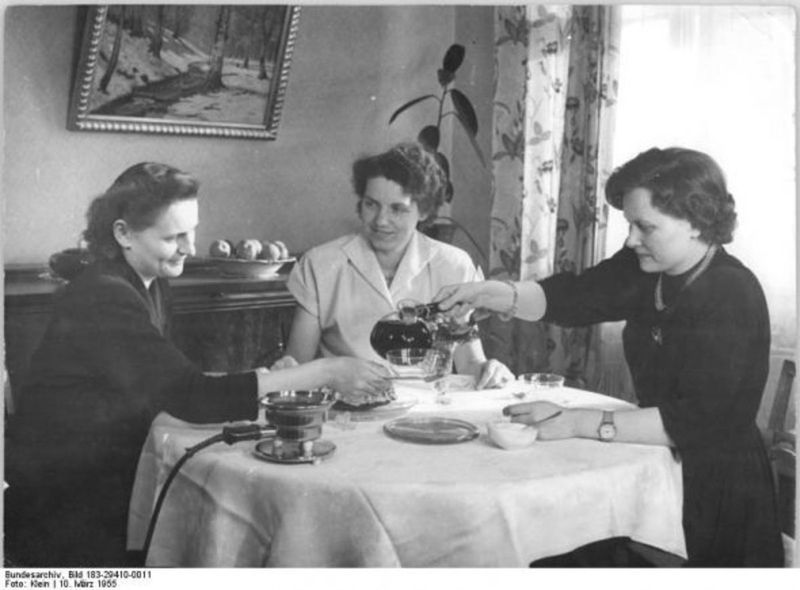
Daily coffee sessions with neighbors were a cherished ritual in the 1950s, providing women with moments of connection and laughter. These gatherings were less about the coffee and more about the companionship.
Women found solace and joy in these daily check-ins, sharing stories, advice, and the occasional gossip. It was a space where friendships deepened, and support was readily available.
The familiarity of these coffee breaks offered a comforting routine, a reminder that one was never alone. These simple moments of shared laughter and support were priceless, creating bonds that often lasted a lifetime.
Women were not only creative when it came to having fun, but they also knew how to create a fulfilled life. Here are 3 tips you can still use today:
1. Prioritizing joy in small rituals
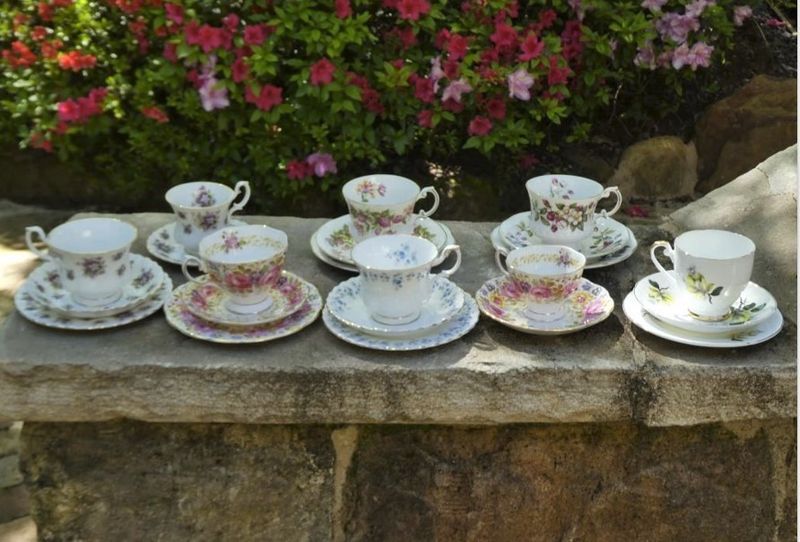
In the 1950s, prioritizing joy in small daily rituals was a secret many women cherished. Whether it was savoring a cup of tea in the morning or taking a quiet moment to reflect, these practices cultivated happiness.
These rituals were personal and varied, tailored to individual preferences and needs. They provided a sense of stability and peace amidst the hustle and bustle of daily life.
Modern women can still embrace these small joys, finding contentment in the little things. By focusing on these mindful moments, one can create a balanced and joyful life, proving that happiness often lies in simplicity.
2. Creating community without perfection

The 1950s taught women that community was more about connection than perfection. Informal gatherings in living rooms were vibrant with laughter and conversation, where the focus was on people, not presentation.
Women embraced the imperfections, finding beauty in real interactions and genuine relationships. These gatherings were about warmth and openness, without the pressure of perfection.
Today, this lesson holds true as modern women strive to build meaningful communities. By prioritizing authenticity over appearance, we can foster genuine connections that enrich our lives and create supportive, loving environments.
3. Dressing for you, not approval
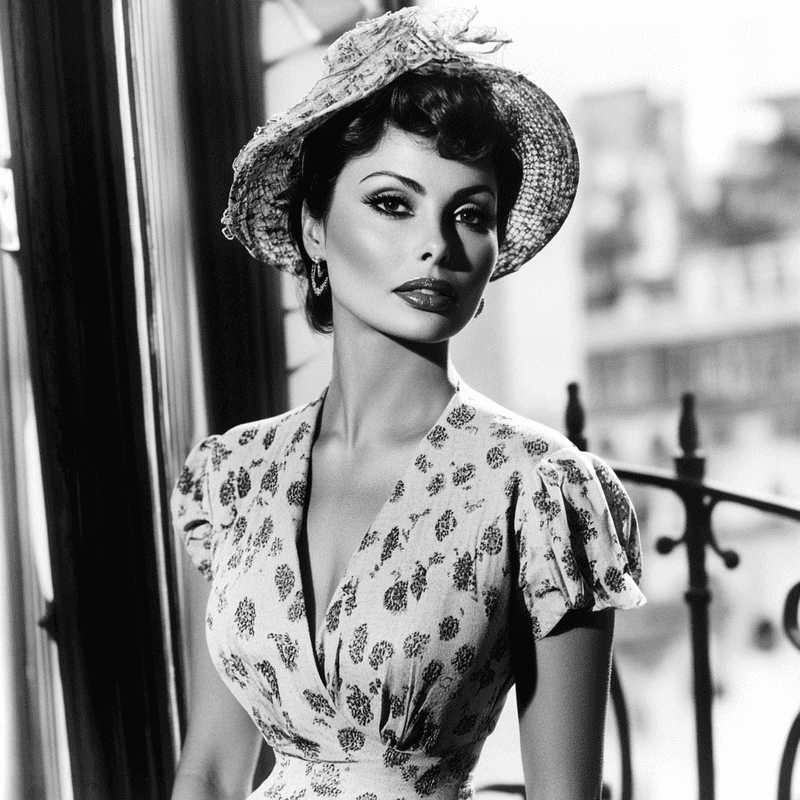
In the 1950s, many women understood the empowerment of dressing for themselves rather than seeking approval. Personal style became a reflection of individuality and confidence, a silent declaration of self-worth.
This approach to fashion allowed women to explore and express their identities without external validation. It was about embracing one’s preferences and feeling confident in those choices.
Modern women can learn from this mindset, finding empowerment in personal style and self-expression. By dressing for oneself, happiness and confidence naturally follow, revealing that true beauty stems from authenticity.

